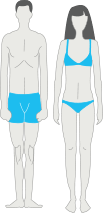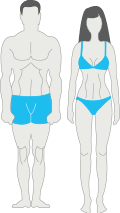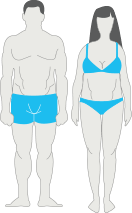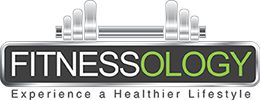Human Body Anatomy, Physiology
WHAT IS YOUR BODY TYPE?
What body type are you? How can you tell? Take our simple test and know! Learn how to train for your body type and what the differences are.
Before you start your training and nutrition regimen, it’s a good idea to figure out your body type. Knowing which of the three basic body types you’re closest to will help you better tailor your diet and exercise plan to meet your needs, and set realistic, attainable goals that pave the way to your success.
WHAT DOES MY BODY TYPE MEAN?
There are three basic human body types: the endomorph, the mesomorph, and the ectomorph. Despite what it might feel like at times, you’re not completely bound to one category or the other. Your lifestyle, genetics, history, and training style all play a part in how you look, and you can definitely change it over time.
That said, many of us to have certain tendencies toward one group or the other. Here’s what typifies each one:
ECTOMORPH
An ectomorph tends to be thin, and struggles to gain weight as either body fat or muscle. They can eat piles of food and stay looking the same, even when gaining muscular weight is their biggest goal. People who battle to gain muscle are often known as “hardgainers.”
Ectomorphs tends to have a lean build, long limbs, and small muscle bellies. Even if an ectomorph manages to put on weight, they may still look skinnier than they are, particularly in the calves and forearms.
Being an ectomorph doesn’t mean you’re doomed to be weak, though. You can still get remarkably strong, and you can be every bit as fit and healthy as someone who looks larger and more muscular. But if you want to gain weight, you’d better be prepared to eat like you’ve never eaten before.
MESOMORPH
The mesomorph has a middle-of-the-road build that takes the best of both worlds. They tend to have wide shoulders, a narrow waist, relatively thin joints, and round muscle bellies.
In short, if you’re a mesomorph, you have a natural tendency to be fit and relatively muscular. Does this mean you can do nothing, eat everything, and get away with it forever? Definitely not—and you’re not necessarily healthier than the other two types, either. But you may be able to “bounce back” from being out of shape more easily than the other two body types, gaining muscle and burning fat with comparative ease.
ENDOMORPH
The endomorph tends to gain weight and keep it on. Their build is a little wider than an ectomorph or mesomorph, with a thick ribcage, wide hips, and shorter limbs. They may have more muscle than either of the other body types, but they often struggle to gain it without significant amounts of accompanying body fat. If you ever feel like you gain 5 pounds simply walking by a donut shop, you may be an endomorph.
This definitely doesn’t mean that an endomorph can’t be healthy. They can be every bit as strong, healthy, and capable as the other two groups, and may actually have some strength advantages due to their additional muscle mass. But if and when they decide to lean out, it’ll take hard work!
ECTOMORPH

- Narrow hips and clavicles
- Small joints (wrist/ankles)
- Thin build
- Stringy muscle bellies
- Long limbs
MESOMORPH

- Wide clavicles
- Narrow waist
- Thinner joints
- Long and round muscle bellies
ENDOMORPH

- Blocky
- Thick rib cage
- Wide/thicker joints
- Hips as wide (or wider)
than clavicles - Shorter limbs
WHAT’S THE BEST WAY TO TRAIN FOR MY BODY TYPE?
Only you can say what your goalsshould be. Many great bodybuilders started out as either rail-thin ectomorphs or endomorphs who struggled with their weight. They learned to overcome their natural tendencies and take control of their life, and so can you!
That said, you may very well find that you have the most success if you use your body type to your advantage.
Ectomorph: Eat a lot of protein and carbs, regularly lift heavy with good form, and don’t overdo aerobic activities. Just because you’re thin doesn’t mean you’re healthy, so still take your diet and fitness seriously!
Mesomorph: Lift moderate weight on a regular basis, and engage in aerobic activities regularly. Don’t worry about getting “bulky,” but watch out for creeping fat gains. You’re not invincible to them!
Endomorph: You may benefit from using moderate weights and maintaining a relatively fast training pace. Getting your heart pumping daily with some form of activity is a good idea for both health and calorie burn. If you find yourself doing lots of work and still gaining weight, the answer is probably in the kitchen.
IN-BETWEENERS
Sometimes, you’re a little bit of this and a little bit of that. As with most training programs, the right program for in-betweeners might be a mix, so it’s important to know who you are.
An ectomorph might have naturally huge arms and self-identify as a mesomorph but be a hard gainer everywhere else.
In this case, the basic rules of training for ectomorphs should still be followed, with a de-emphasis on upper arm isolation, in favor of compound exercises, if balance is one of the goals.
Likewise, a mesomorph with naturally skinny arms might accidentally, in service to bulking-up those arms, pack on extra torso weight where it’s not wanted.
Even endomorphs might have slightly thinner legs and tighter glutes than usual for their body type, viewing themselves as mesomorphs and gobbling down carbs without worry, with a dietary intake more fitting to the slimmer athlete.
The curse of the in-betweeners is to see themselves a little less clearly, favoring the body type they’d want to be, and following the wrong program. In-betweeners should know thyself, and train accordingly.

